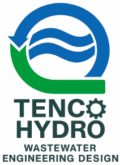🔬A Deep Dive DAF Comparison: Pressurization Technologies
Krofta Tube vs. Whitewater Skid vs. Hellbender Pump
When it comes to Dissolved Air Flotation (DAF) systems, the pressurization method is the backbone of flotation performance. It controls bubble formation, solids attachment, and removal efficiency — especially in high-strength industrial wastewater like that from metal finishing, food processing, and chemical plants.
In this article, we’ll take a deep dive into the three dominant pressurization technologies used today:
- Krofta-Style Air Dissolving Tube (ADT)
- Skid-Mounted Whitewater Saturation System
- Hellbender/Impeller Pump-Based Pressurization System
Let’s break them down and compare performance, reliability, cost, and use case suitability.
⚙️ Option 1: Krofta-Style Air Dissolving Tube (ADT)
The Krofta tube is a classic low-cost method for generating whitewater. It works by injecting air into a pressurized pipe where a centrifugal pump shears and dissolves air into water.
✅ Pros
- Compact and inexpensive
- Fewer components to maintain
- No saturation tank required
- Simple integration for low flow systems
❌ Cons
- Poor solids handling (can clog with metals or floc)
- Limited bubble saturation efficiency
- Inconsistent performance under variable loading
- Cannot handle abrasive or oily wastewater reliably
Best for: Small flows with light contaminant loading and minimal solids.
🚀 Option 2: Skid-Mounted Whitewater Saturation System
This is the gold standard for high-performance DAF systems. It includes a dedicated recycle pump, inline air injection, and a pressurized saturation tank, often mounted on a compact skid for plug-and-play installation.
✅ Pros
- High saturation efficiency and stable microbubble formation
- Handles variable flow, pH, and solids
- Fully configurable with sensors (pH, ORP, turbidity, pressure)
- Modular design allows for easy maintenance and upgrades
❌ Cons
- Higher capital cost
- Larger footprint
- Slightly more complex controls and installation
Best for: Mid- to large-scale systems with demanding solids, metals, or emulsified oils — especially in metal finishing, dairy, and chemical applications.
🌪️ Option 3: Hellbender/Impeller Pump-Based Pressurization System
This approach centers around using a Hellbender/Impeller Pump, or similar vortex/recessed impeller pump, as the core of the pressurization loop. These pumps are specifically engineered for abrasive, solids-laden, and chemically aggressive wastewater.
✅ Pros
- Exceptionally clog-resistant (great for grit, floc, and metal hydroxides)
- Durable construction (Ni-Hard, CD4MCu, etc.)
- Ideal for chemically aggressive or oily wastewater
- Works well with VFDs and inline air injection for control
- Fewer moving parts than saturation skids
❌ Cons
- Bubble saturation slightly lower than dedicated tank systems
- Requires proper air injection design to optimize efficiency
- Slightly larger pump footprint
- May need reinforced piping supports
Best for: Plants with gritty, oily wastewater that demand robust performance and low maintenance.
📊 Head-to-Head Comparison
| Feature | Krofta ADT | Whitewater Skid | Hellbender/Impeller Pump System |
|---|---|---|---|
| Saturation Efficiency | Low to moderate | High | Moderate to high (with proper injection) |
| Solids Handling | Poor | Good | Excellent |
| Clog Resistance | Low | Moderate | Very high |
| Ease of Maintenance | High | Moderate | High |
| System Complexity | Very simple | Higher (skid, tank, controls) | Moderate |
| Upfront Cost | Low | High | Moderate |
| Ideal Applications | Light solids, stable flows | High-solids, variable pH, performance-critical | Abrasive, oily wastewater |
🏁 Final Takeaway
Each DAF pressurization method has its place, but the right choice depends on wastewater characteristics, performance expectations, and maintenance priorities.
- Use a Krofta-style ADT when budget is tight and flows are clean and consistent.
- Choose a whitewater saturation skid when performance is critical and influent varies in chemistry and solids.
- Go with a Hellbender/Impeller pump-based system when reliability, clog resistance, and abrasive fluid handling are top priorities — especially in grit-heavy environments.
Looking for help selecting or customizing a DAF pressurization system? We can design and build it around your specific process.
